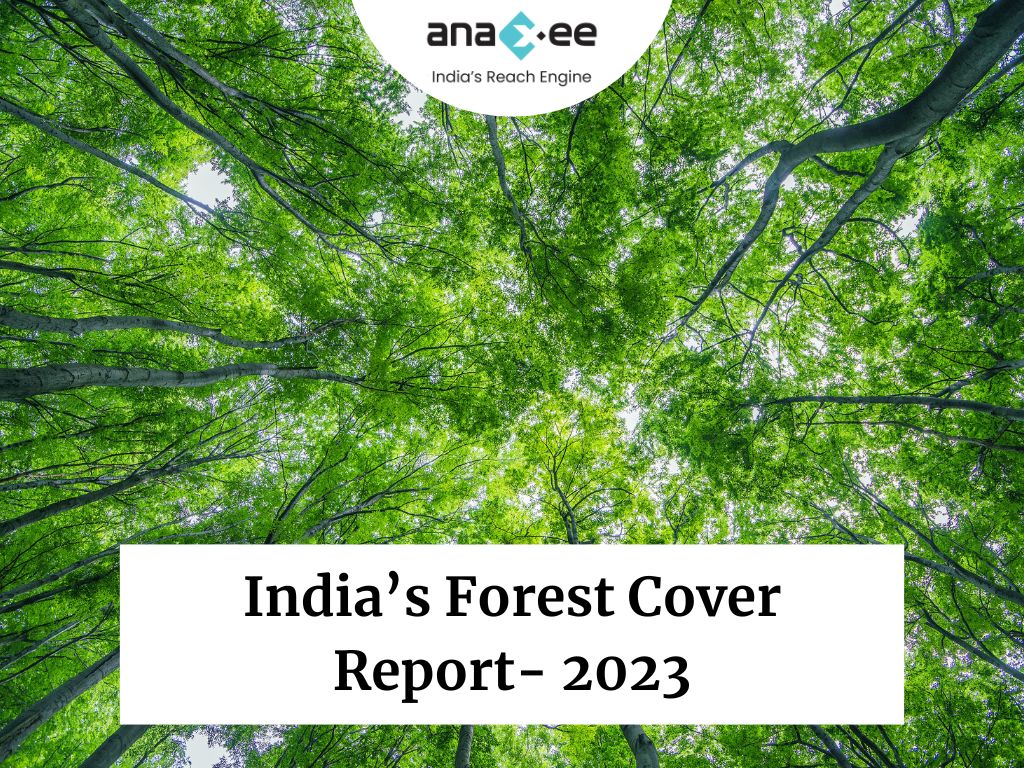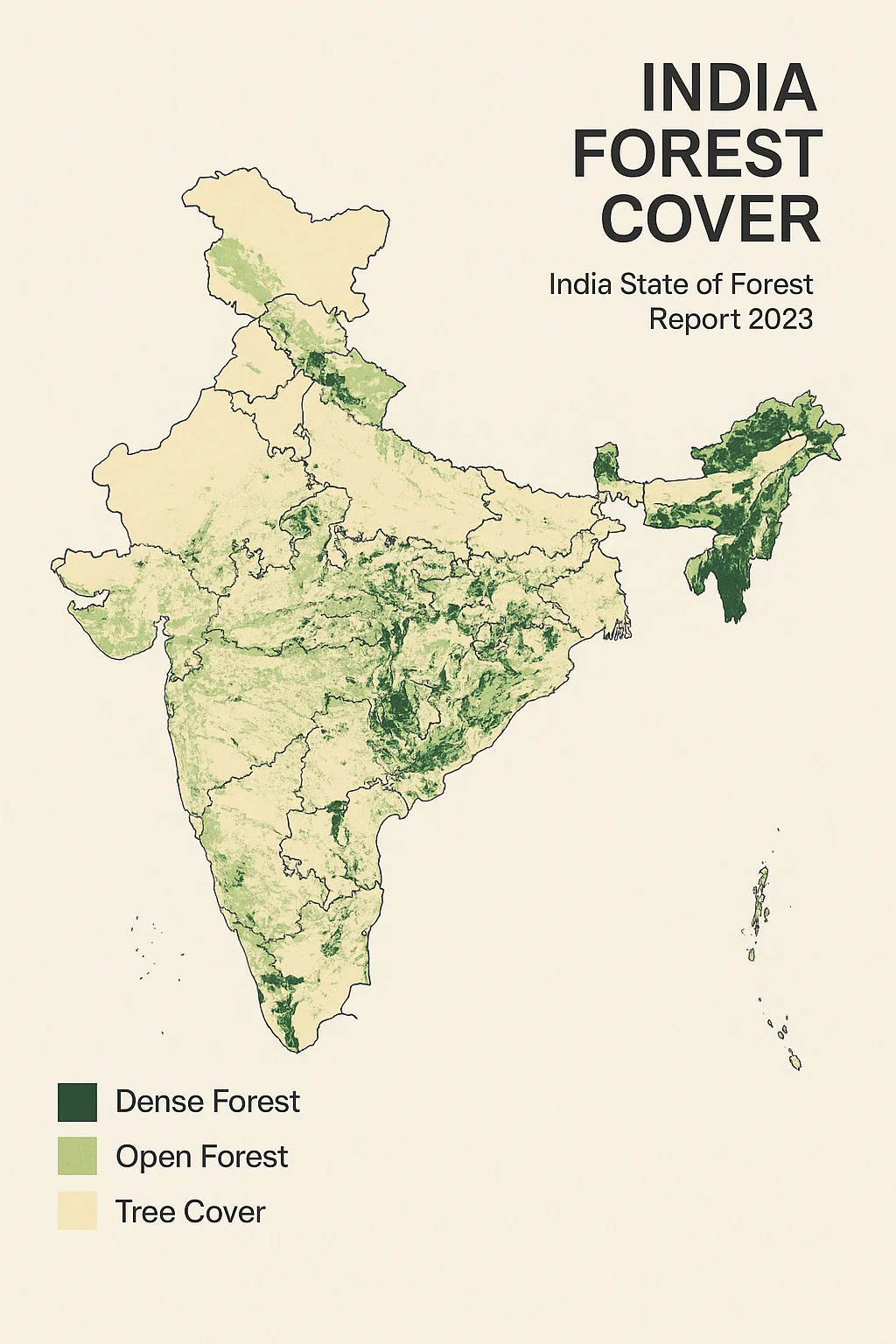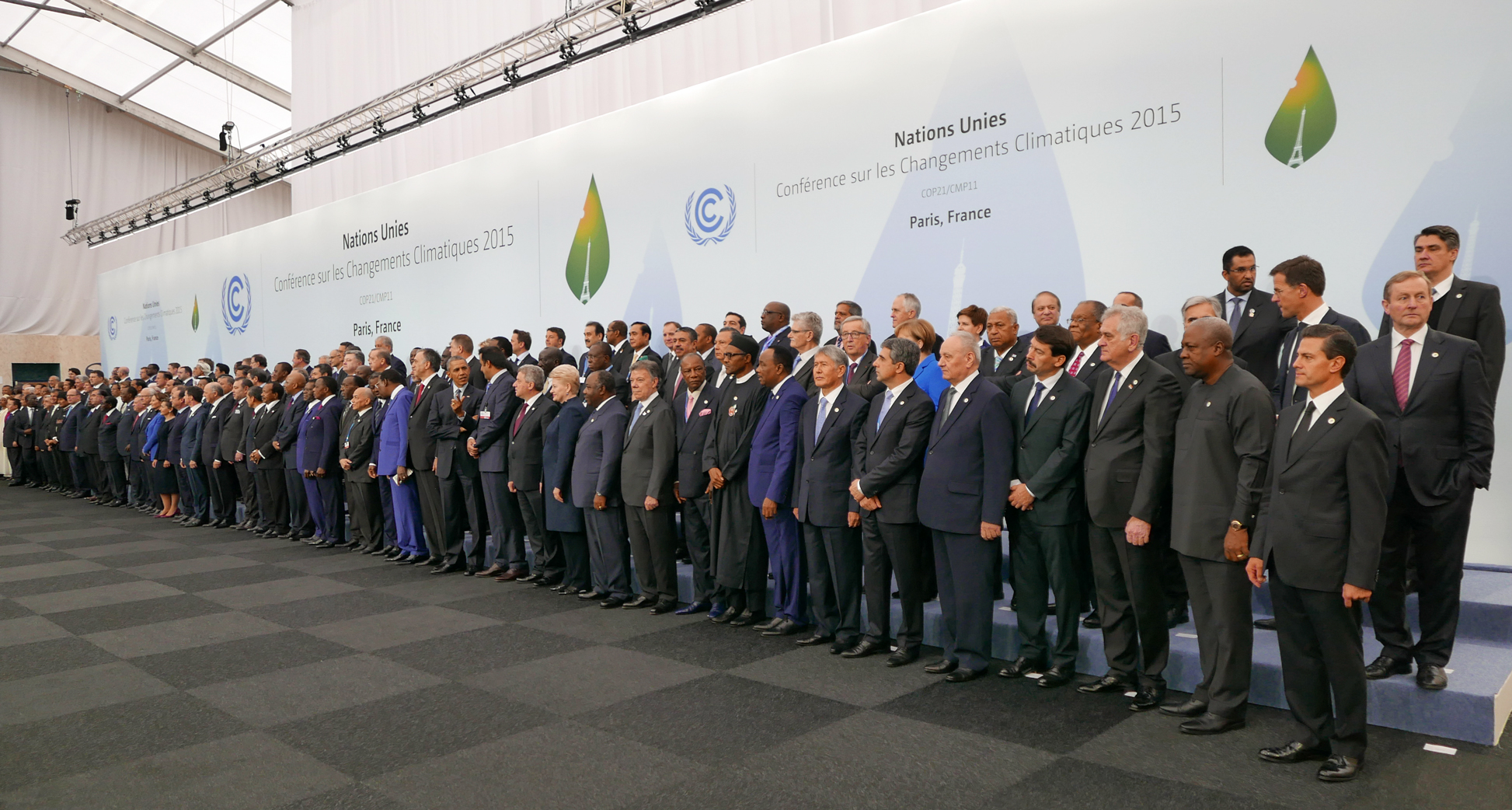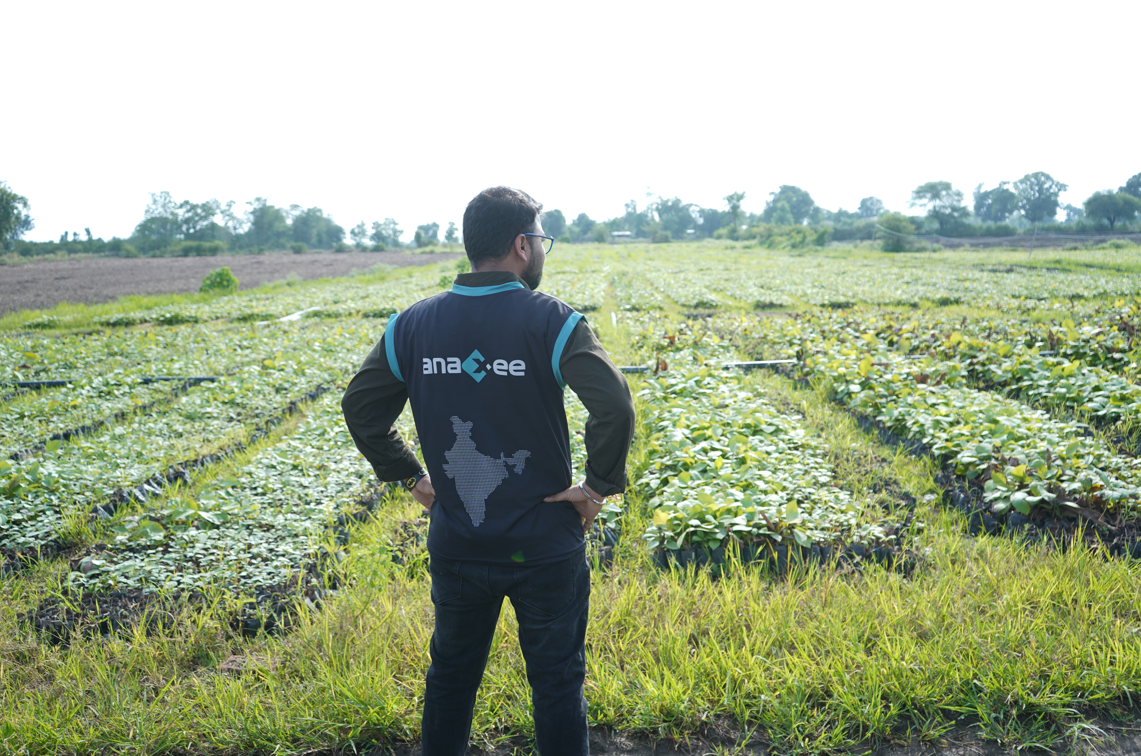BLOG

India’s Forest Report 2023: Top Gainers, Climate Impact & Forest Trends
India’s Forest Cover in 2023- Winners, Losers & What It Means for Climate Action
Introduction
India’s forests are more than ecological spaces—they’re climate shields, biodiversity hubs, and livelihoods for millions. Every two years, the India State of Forest Report (ISFR) becomes the definitive pulse check on the nation’s green wealth. The 2023 report and the numbers speak of both triumph and challenge.
This blog unpacks the biggest winners and losers in forest cover change, pinpoints state-wise shifts, and explores what it all means for climate resilience and India’s carbon commitments.

1. The Big Picture: Forest & Tree Cover Status
- Total forest cover: 7,15,342.61 sq. km (21.76% of India’s geographical area).
- Total tree cover: 1,12,014.34 sq. km (3.41%).
- Combined forest and tree cover: 8,27,356.95 sq. km (25.17%).
- Net increase from 2021: +1,445.81 sq. km
While the forest cover rose modestly by 156.41 sq. km, the tree cover surged by 1,289.4 sq. km, largely driven by Trees Outside Forests (TOF) and agroforestry efforts.
2. Top Gainers in Forest & Tree Cover
a. Chhattisgarh: +683.62 sq. km
- Agroforestry expansion, community forestry models, and decentralized planning drove growth.
b. Uttar Pradesh: +559.19 sq. km
- Massive increase in TOF due to agroforestry and rural greening initiatives.
c. Odisha: +558.57 sq. km
- Coastal afforestation and community plantation programs contributed.
d. Rajasthan: +394.46 sq. km
- Surprising gain, mostly from TOF and canal-side plantation models.
3. Top Losers in Forest & Tree Cover
a. Madhya Pradesh: -612.41 sq. km
- Despite being the greenest state by area, MP saw declines from encroachment and shifting land use.
b. Karnataka: -459.36 sq. km
- Urbanization, infrastructure expansion, and grazing pressures cited.
c. Ladakh: -159.26 sq. km
- Harsh climatic zones with decreasing snowline affecting natural vegetation.
d. Nagaland: -125.22 sq. km
- Shifting cultivation and forest degradation are leading causes.
4. Why These Shifts Matter for Climate
India has committed under the Paris Agreement to create an additional carbon sink of 2.5 to 3 billion tonnes of CO2 equivalent through forest and tree cover by 2030. While incremental gains are positive, they are not yet transformational.

Losses in key biodiversity zones (like Northeastern states) threaten both climate adaptation and mitigation strategies. Forests are not just carbon sinks but also temperature regulators and rainmakers.
5. Urban Forest Trends
Mega-cities like Delhi, Mumbai, and Bengaluru are now monitored separately. Urban greening efforts are rising, but pollution and urban sprawl pose continued threats.
6. Policy Tools and Community Participation
- CAMPA funds, MGNREGS, and State Green Missions are pivotal.
- Joint Forest Management (JFM) and Van Panchayats show results where implemented with transparency.
7. The Anaxee Perspective: Digitizing India’s Forest Revolution
Anaxee, with its rural network and tech stack, can:
- Conduct real-time forest monitoring using digital apps.
- Geotag tree plantations and track survival rates.
- Mobilize local communities to safeguard TOF regions.
By making afforestation traceable and verifiable, Anaxee can enhance forest-based carbon credit readiness.
Conclusion: What Lies Ahead?
The ISFR 2023 is a mixed bag. Gains in states like Chhattisgarh and Odisha are promising. However, net losses in forest cover in several ecological hotspots signal the need for urgent action.
Digitally monitored and community-led forestry holds the key. India can still meet its carbon sink targets, but it will require scale, transparency, and innovation- something Anaxee is already building on. if you need more knowledge about these agroforestry in India, Connect with sales@anaxee-wp-aug25-wordpress.dock.anaxee.com



